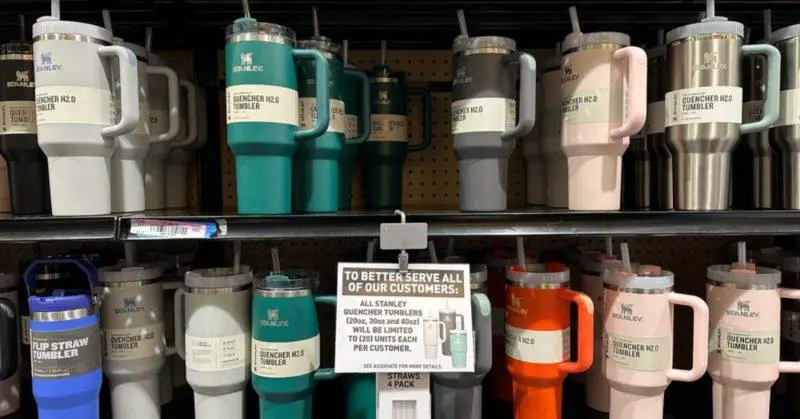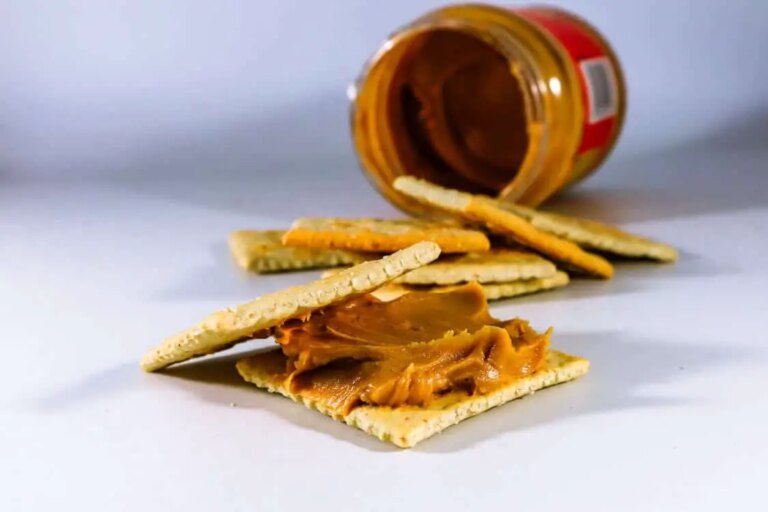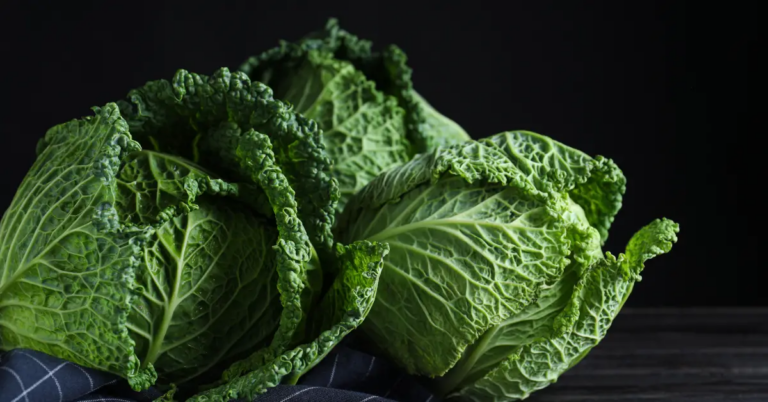The Stanley Quencher tumbler, a favorite among hydration enthusiasts, is now at the center of a major controversy. Recently, concerns about the presence of lead in these popular tumblers have erupted, leading to public outcry and legal action. What began as a series of TikTok revelations has grown into a full-blown scandal, casting a shadow over Stanley’s reputation for quality and safety.
NBC News reports that lawsuits have been filed against Pacific Market International, Stanley’s parent company, accusing it of concealing the presence of lead to protect its sales. This controversy not only raises serious questions about consumer safety but also highlights the crucial need for corporate accountability.
The Spark on Social Media
The controversy over lead in Stanley Quencher tumblers ignited on social media, specifically TikTok. Users began sharing videos showing themselves testing their tumblers for lead using home test kits. One prominent TikTok user, known as Lead Safe Mama, posted detailed breakdowns of her findings, revealing that the tumblers tested positive for lead. This sparked widespread concern and outrage among consumers who had trusted Stanley for their daily hydration needs.
Consumer Investigations
The viral TikTok videos showed consumers using reactive agent home test kits to detect lead in their Stanley tumblers. These tests indicated the presence of lead, which is known for its severe health risks, including damage to the nervous system and developmental issues in children. The revelation quickly spread, with more users conducting their own tests and sharing results, amplifying the concern and leading to a significant public outcry.
Consumers felt a deep sense of betrayal upon discovering that a product they relied on for safe hydration potentially contained a toxic substance. The immediate health risks posed by lead exposure were alarming, but the emotional impact of feeling deceived by a trusted brand added fuel to the fire. Users flooded social media platforms with their frustrations and demands for accountability from Stanley and its parent company, Pacific Market International.
Studies and Findings
Research has long established that even low levels of lead exposure can be harmful, particularly to children. According to the CDC, lead exposure can affect almost every organ and system in the human body. The findings shared on TikTok underscored the potential health hazards of using products containing lead, making the issue not just a matter of consumer trust but also a significant public health concern. [1]
As the controversy grew, it became clear that this was not just a fleeting social media trend but a serious issue requiring thorough investigation and resolution. The initial revelations on TikTok set the stage for legal actions and broader discussions about product safety and corporate responsibility.
Escalation to Legal Action
The controversy over the lead in Stanley Quencher tumblers quickly escalated from social media revelations to formal legal action. Following widespread public concern sparked by TikTok videos, two major lawsuits were filed against Pacific Market International (PMI), Stanley’s parent company. These lawsuits accuse PMI of knowingly concealing the presence of lead in its popular tumblers, thereby misleading consumers about the safety of their products.
The Lawsuits
Two separate class-action lawsuits were filed in the U.S. District Court for the Western District of Washington. The plaintiffs allege that PMI marketed the tumblers as safe and durable, failing to disclose that they contained toxic lead. The lawsuits argue that this omission prevented consumers from making informed purchasing decisions, violating their trust and compromising their health. [2,3]
The complaints highlight that if consumers had known about the lead content, they would not have purchased the tumblers, opting instead for safer alternatives. The lawsuits assert that PMI’s failure to disclose this critical information was a deliberate act to protect its profits, which had soared due to the tumblers’ popularity driven by social media and influencer endorsements. [4]
Allegations of Concealment
The plaintiffs claim that PMI’s selective disclosure of product materials, such as advertising the tumblers as “BPA-free” and made from “recycled stainless steel,” misled consumers into believing that all materials used were safe. However, the use of lead in the sealing process was not revealed until January 2024, after the issue gained significant attention on social media. This concealment is alleged to have deprived consumers of the knowledge necessary to make safe choices for themselves and their families. [3,4]
Health Risks and Legal Claims
The lawsuits emphasize the severe health risks associated with lead exposure, including neurological damage, cognitive impairments, and developmental delays in children. Despite PMI’s assertion that the lead is encapsulated within stainless steel and does not come into contact with the consumer or the contents of the tumbler, the plaintiffs argue that damage to the tumbler could potentially expose users to lead. This concern is particularly pertinent given the tumblers’ intended use for outdoor and active lifestyles, where they are more likely to be dropped or damaged.
The legal actions seek compensatory damages, a permanent injunction requiring PMI to disclose the presence of lead in all relevant products, and punitive damages for the alleged deception. The plaintiffs are also pushing for the certification of a class action to include all affected consumers nationwide. [3]

Stanley’s Response
Amid the escalating controversy over lead in their Quencher tumblers, Stanley, under the parent company Pacific Market International (PMI), issued a detailed response to address consumer concerns. They acknowledged the presence of lead in the sealing pellets used in the vacuum insulation process but emphasized that this lead is encapsulated by stainless steel, making it inaccessible to consumers.
Stanley clarified that the lead used in their tumblers is part of the sealing process for the vacuum insulation, which helps maintain the temperature of beverages. The company assured that no lead is present on any surface that comes into contact with the user or the contents of the tumbler. According to Stanley, the lead is sealed within a stainless steel layer, ensuring that it does not pose a risk under normal usage conditions. [5]
Stanley stated that all their products comply with U.S. regulatory requirements, including California’s Proposition 65, which mandates warnings for products containing chemicals known to cause cancer or reproductive harm. They also mentioned that their products are tested and validated for safety through FDA-accredited third-party labs, ensuring adherence to strict guidelines concerning harmful substances like BPA, BPS, PFOS, and phthalates.
In response to the public outcry, Stanley reiterated that the lead is securely encapsulated and highlighted their commitment to exploring alternative materials for the sealing process. They reassured customers that in the rare event the base cap of a tumbler comes off and exposes the seal, the product is covered under their lifetime warranty. [6]
Stanley’s proactive communication aimed to mitigate fears and restore confidence in their product safety. They continue to defend their manufacturing practices while promising ongoing improvements to address consumer concerns comprehensively.
The Safety Concerns Explained
Lead exposure poses serious health risks, particularly for children and pregnant women. According to the Centers for Disease Control and Prevention (CDC), lead can affect nearly every system in the body. In children, lead exposure can result in significant developmental issues, such as reduced IQ, attention disorders, and impaired academic performance. These effects are often permanent and can occur even at low levels of exposure. [1,7]
Children under six are especially vulnerable because their bodies are still developing, and they absorb lead more easily than adults. Lead can be ingested through various sources, including contaminated dust, soil, water from leaded pipes, and consumer products containing lead. The World Health Organization (WHO) notes that even small amounts of lead can cause severe health problems, including neurological damage, anemia, and kidney damage.
In adults, lead exposure can cause cardiovascular issues, increased blood pressure, and kidney damage. Pregnant women exposed to lead face risks such as miscarriage, stillbirth, and premature birth. Lead stored in bones can be released into the bloodstream during pregnancy, exposing the developing fetus.
Specific Risks with Stanley Tumblers
The lawsuits against Stanley highlight a particular risk associated with the lead used in the sealing pellets at the base of their tumblers. While the company asserts that the lead is encapsulated by stainless steel and does not come into contact with consumers or the contents of the tumbler, there is a concern that damage to the tumbler could potentially expose users to lead. Regular use, especially in outdoor activities where the tumbler might be dropped or subjected to extreme conditions, could compromise the seal.
Regulatory and Safety Standards
Stanley has stated that their products meet all U.S. regulatory requirements, including California’s Proposition 65, which requires businesses to inform consumers about the presence of chemicals known to cause cancer or reproductive harm. They emphasize that the lead is securely contained within a stainless steel layer and poses no risk under normal usage.
However, consumer advocates argue that any presence of lead, regardless of encapsulation, is a cause for concern, especially when alternative materials that do not pose such risks are available. The ongoing legal battles focus on whether Stanley adequately disclosed the potential risks and took sufficient steps to ensure consumer safety.

Consumer Tips on Ensuring Product Safety
Ensuring the safety of the products we use daily is crucial, especially when it comes to items that come into contact with food and beverages. Here are some comprehensive tips to help consumers navigate product safety and avoid harmful substances like lead.
Research Before You Buy
- Check Reviews and Reports: Utilize online resources such as consumer reviews and reports from reputable organizations. Websites like Consumer Reports and the Consumer Product Safety Commission (CPSC) provide valuable insights into product safety.
- Manufacturer Websites: Visit the manufacturer’s website for detailed product descriptions and safety information. Look for certifications and compliance with safety standards.
- Third-Party Certifications: Look for third-party certifications from organizations like NSF International, which test products for safety and quality.
Read Product Disclosures Carefully
- Labels and Warnings: Always read product labels and safety warnings. Look for any mentions of potentially harmful materials, such as lead.
- Safety Certifications: Check for certifications like “BPA-free,” “lead-free,” and other relevant labels that indicate the product has been tested for harmful substances.
Using Home Test Kits for Lead Detection
- Reliable Test Kits: Purchase reliable home test kits to detect lead. These kits can provide immediate results and peace of mind about the safety of your products. However, be aware that not all test kits are equally reliable.
- Follow-Up Testing: If a home test kit indicates the presence of lead, consider following up with professional testing for conclusive results.
Stay Informed About Recalls
- Sign Up for Notifications: Sign up for recall notifications from government agencies like the CPSC. This helps you stay updated on any products that have been found unsafe.
- Regular Checks: Regularly check websites like recalls.gov for updates on product recalls and safety alerts.
Prioritize Products Made from Known Safe Materials
- Safe Materials: Opt for products made from materials known to be safe, such as food-grade stainless steel, glass, or BPA-free plastics.
- Avoid High-Risk Materials: Be cautious with products that may contain lead, such as certain ceramics, old toys, and imported items that may not meet stringent safety standards.
Seek Out Transparency
- Transparent Companies: Support companies that are transparent about their manufacturing processes and the materials used in their products.
- Customer Engagement: Engage with brands through social media or customer service to ask about product safety features if you have concerns.
Trust Your Instincts
- Too Good to Be True: If a product deal seems too good to be true, or if a product does not have safety information available, it might be best to choose a different option.
- Visible Issues: Avoid products that appear damaged or have visible defects, as these could compromise safety.
Specific Tips for Pottery and Cookware
- Avoiding Lead in Pottery: Be cautious with pottery, especially imported items. Ensure they are labeled as lead-free and consider using home test kits for confirmation.
- Proper Use: Follow manufacturer instructions for the proper use and maintenance of your products to avoid accidental exposure to harmful substances.
By following these tips, consumers can take proactive steps to ensure that the products they bring into their homes are safe and free from hazardous substances like lead. Awareness and vigilance are key in navigating the vast market of consumer goods, where safety should always be a top priority.
My Personal RX on Ensuring Safe Hydration Choices
As a doctor, I cannot stress enough the importance of using safe, non-toxic products for your hydration needs. With recent concerns about lead in popular tumblers, here are some practical tips to help you make informed choices and maintain your health.
- Opt for Certified Lead-Free Products: Always choose drinkware that is certified lead-free. Look for certifications from reputable organizations like NSF International to ensure your safety.
- Use Reliable Home Test Kits: If you’re worried about your current tumblers, use reliable home lead test kits to check for contamination. These kits can provide quick insights and peace of mind.
- Stay Informed on Recalls and Safety Alerts: Subscribe to notifications from the Consumer Product Safety Commission (CPSC) to stay updated on any recalled products. Regularly check websites like recalls.gov for the latest safety alerts.
- Choose Safe Materials: Opt for drinkware made from food-grade stainless steel, glass, or BPA-free plastics. These materials are generally safer and less likely to contain harmful substances.
- Prioritize Products with Liver Support: Incorporate products that support holistic liver detoxification like my Liver Support supplements and maintain a healthy inflammatory and antioxidant balance. This can help your body process and eliminate toxins more effectively.
- Avoid High-Risk Items: Be cautious with ceramics, antique toys, and imported goods that may not meet stringent safety standards. Stick to products from reputable brands that adhere to safety regulations.
- Educate Yourself with a Toxic Ingredient Guide: Use my Toxic Ingredient Guide to learn about harmful substances to avoid in your products. Making smarter choices starts with being well-informed.
- Engage with Transparent Brands: Support companies that are transparent about their manufacturing processes and materials. Brands that openly share their safety protocols are more likely to prioritize your health.
- Regularly Inspect Your Products: Check your drinkware for signs of wear and tear. Damage can increase the risk of exposure to harmful substances. Use warranties to replace any compromised items.
- Ask Questions: Don’t hesitate to contact manufacturers with questions about product safety. Reputable companies will provide detailed information and reassurance about their products.
By following these tips, you can significantly reduce the risk of exposure to harmful substances and ensure that your hydration choices are safe and healthy. Stay informed, stay safe, and prioritize your health.
Sources:
- Health effects of lead exposure | Lead | CDC. (n.d.). https://www.cdc.gov/nceh/lead/prevention/health-effects.htm
- Jones, D. N. (2024, February 2). Stanley cups maker sued over lead in tumblers, class action proposed. Yahoo Finance. https://uk.finance.yahoo.com/news/stanley-cups-maker-sued-over-180044653.html
- Jackson, I., & Jackson, I. (2024, February 29). Class action lawsuit filed over presence of lead in Stanley Quencher Tumbler Cups. AboutLawsuits.com. https://www.aboutlawsuits.com/class-action-lawsuit-lead-stanley-tumblers/
- Tfl. (2024, March 1). Stanley Cup-Maker named in false advertising, fraud lawsuit over lead. The Fashion Law. https://www.thefashionlaw.com/stanley-cup-maker-named-in-false-advertising-fraud-lawsuit-over-lead/
- Richard, L. (2024, January 25). Stanley products contain “some lead,” company says as insulated steel tumblers surge in popularity. Fox Business. https://www.foxbusiness.com/markets/stanley-products-contain-some-lead-company-insulated-steel-tumblers-surge-popularity
- Do the Quencher H2.0 FlowstateTM Tumblers contain lead? (n.d.). Stanley 1913. https://support.stanley1913.com/en/support/solutions/articles/69000850924-do-the-quencher-h2-0-flowstate-tumblers-contain-lead-
- World Health Organization: WHO. (2023, August 11). Lead poisoning. https://www.who.int/news-room/fact-sheets/detail/lead-poisoning-and-health
- Couto, S. D. (2024, February 23). Stanley cups: Customers sue over presence of lead in popular tumblers. Global News. https://globalnews.ca/news/10308337/stanley-cup-lawsuit-lead-california/




















